Add Analysis Model
|
Collect
Overview
Dataset supports saving the results obtained from the analysis model as business models, such as event analysis, funnel analysis, retention analysis, session analysis, etc.
As internal data assets of the enterprise, business models can be used for report configuration, meeting the scenario of viewing analysis results from multiple sources in one report.
For example, a company launches a new campaign with the goal of attracting new users to register and place orders. Analyze whether the conversion path of new users from registration to ordering is smooth and continuously observe the retention and repeat purchase situation of these new users.
- Use event analysis to obtain the specific number of new users in each channel, province, city, and age group.
- Check whether new users have completed subsequent target operations, such as "paying and placing orders," in the future period.
- An order may contain steps such as app registration, searching for goods, adding them to the shopping cart, and paying for the order. Use funnel analysis to view the conversion and dropout between each step for these new users.
- Use interval analysis to view the time consumed for conversion between key steps.
Through retention analysis, find out the proportion of users who initiate the payment order operation again in the current week, two weeks, and three weeks after their first payment.
Analysis Model Types
You can add the result data obtained by users in the analysis model to the Dataset. Currently, the supported source types are:
- Event Analysis
- Funnel Analysis
- Retention Analysis
- Session Analysis
- Metric Analysis
- Interval Analysis
- LTV Analysis
- Attribute Analysis
- Distribution Analysis
Operation Entrance
There are 2 operation entrances to add the query results of the analysis model to the Dataset:
- Entry One: "Create Model" in the Dataset;
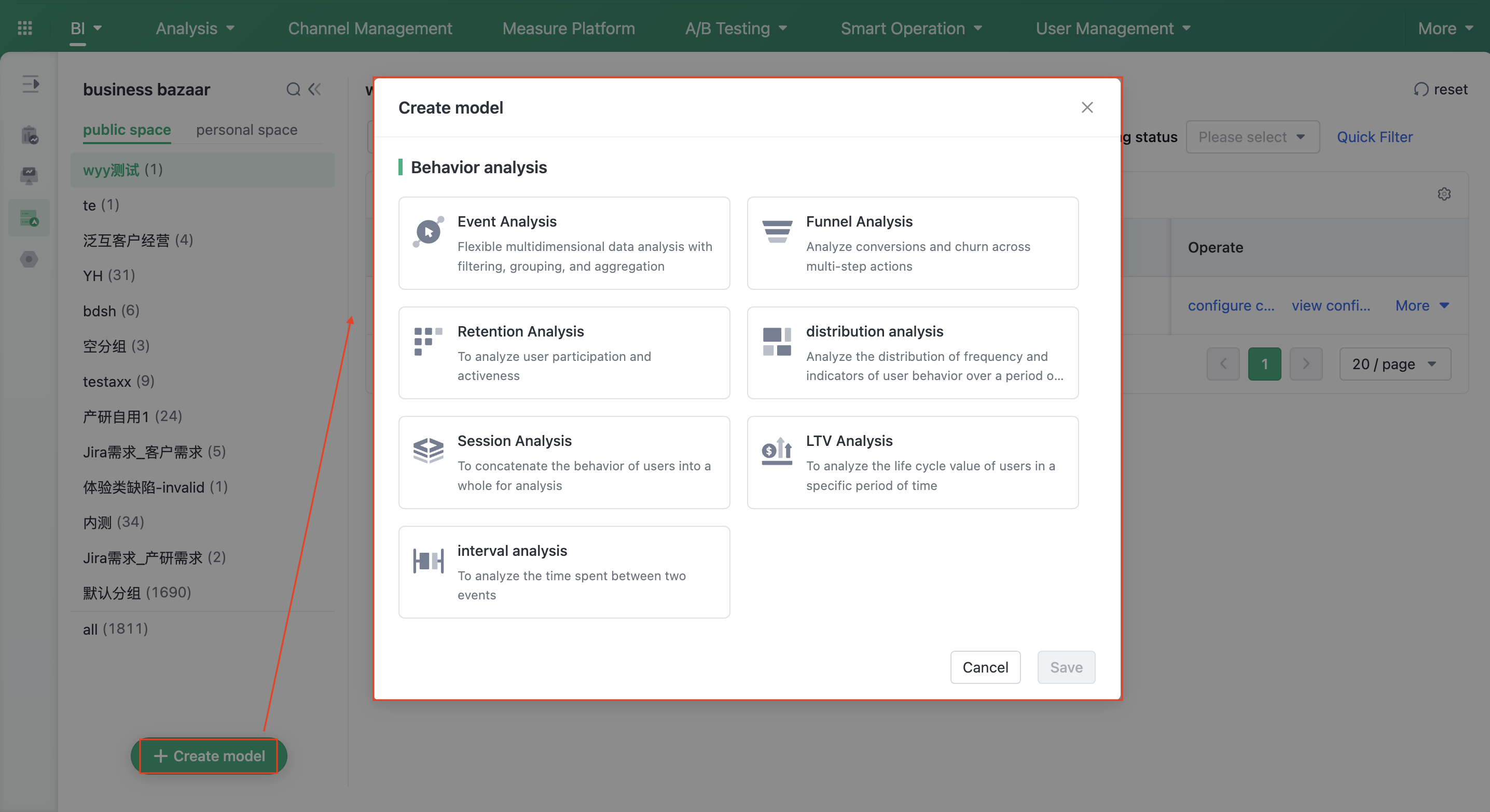
- Entry Two: "Add to → Dataset" in the Analysis Model interface(In older versions, dataset was named business bazaar/business mart)
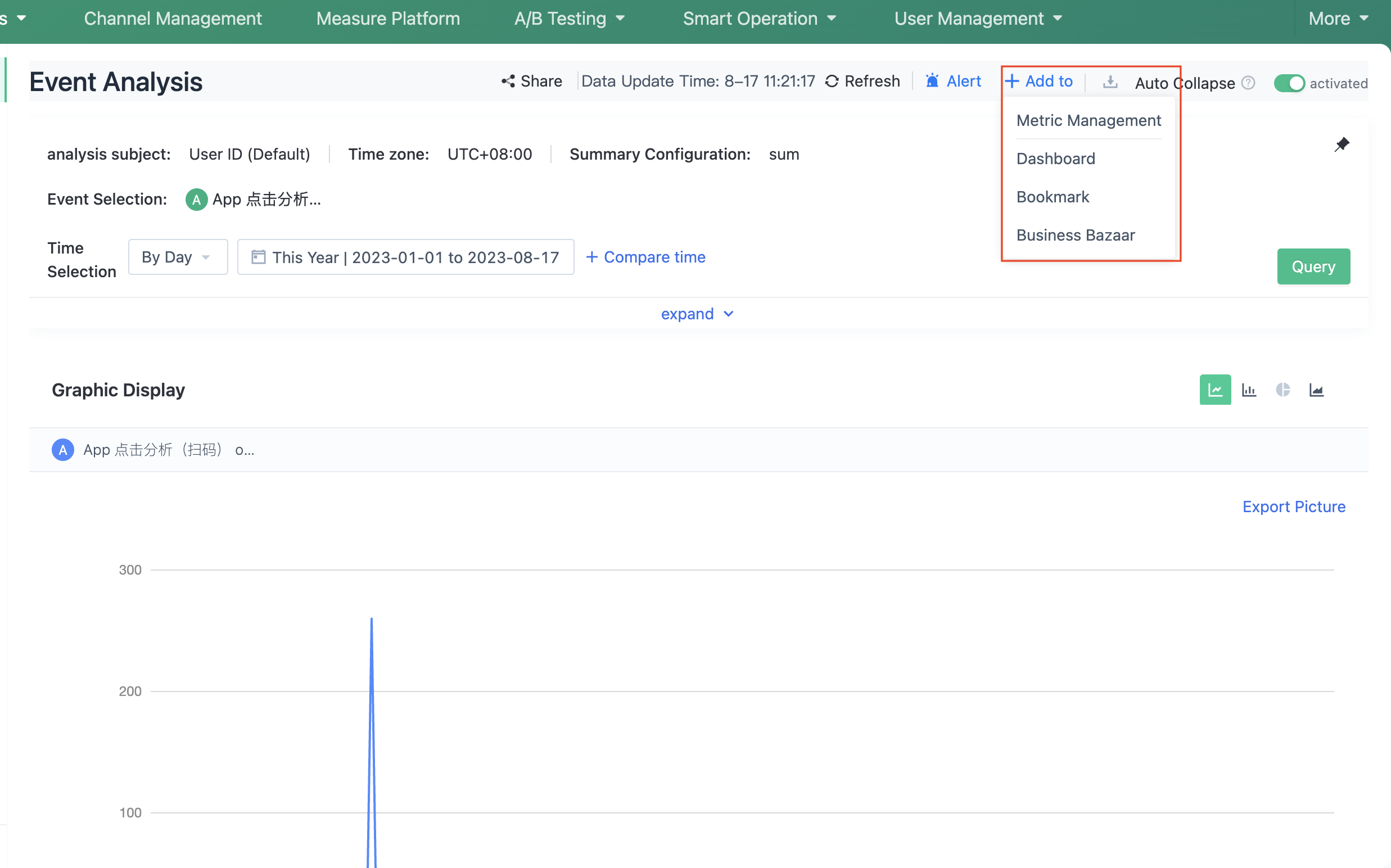
Add Business Model
You can add the results obtained from the analysis model query to the business market for unified maintenance and management, and support subsequent visual configuration and display. The following figure takes event analysis as an example.
- Note: When saving, the system will perform content verification on the intermediate table results to ensure that the field names in a single business model are unique and not duplicated, as shown below:

Business Model Configuration Information
When publishing the results of the analysis model query to the business market for storage, configuration information is required, as shown in the figure below:
- Basic Information
- Business Settings
- Update Settings
- Permission Settings
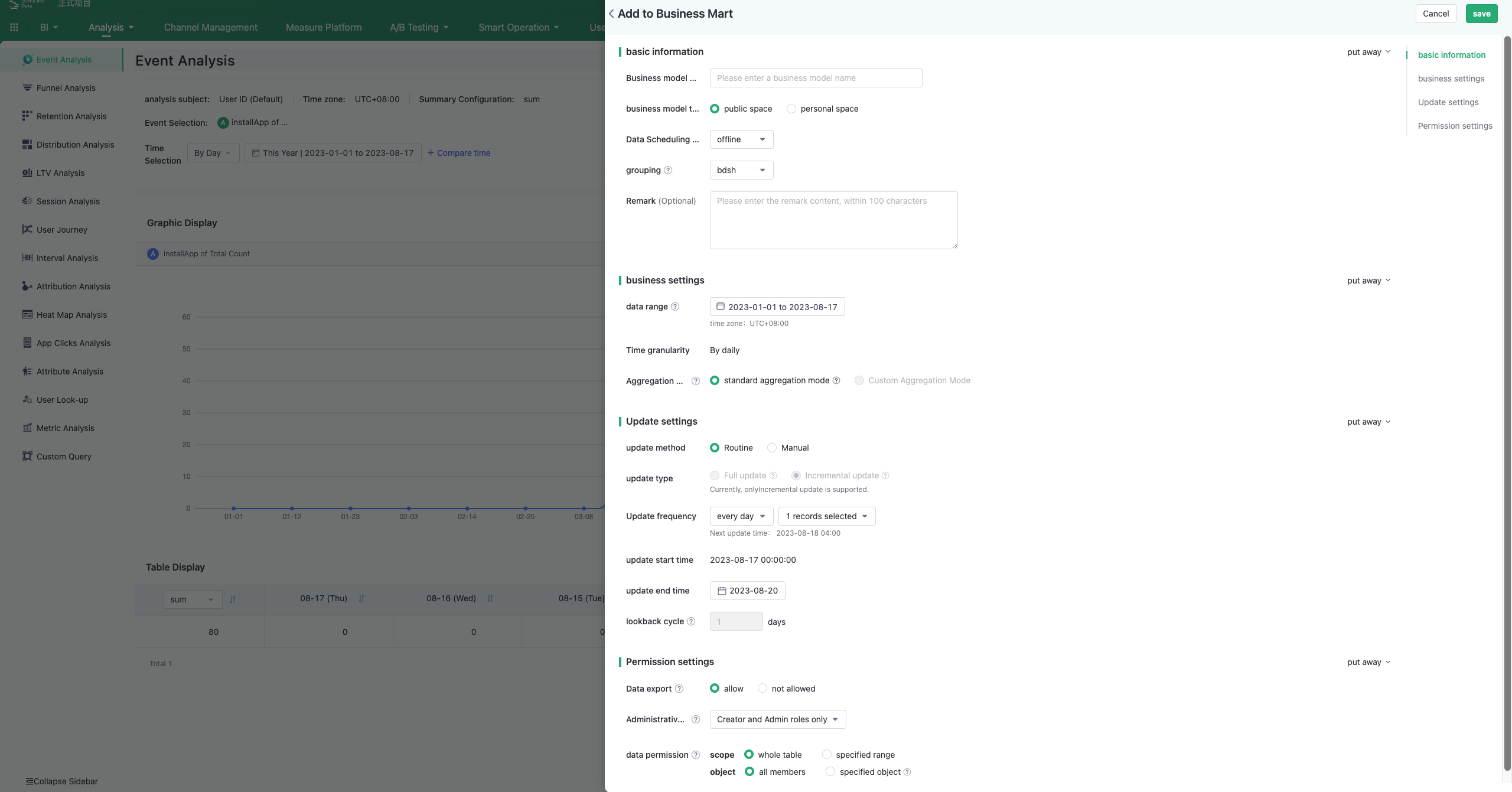
Please refer to the table below for detailed functions of the configuration interface:
| Classification | Name | Function | |
|---|---|---|---|
| 1 | Basic Information | Business Model Name | The unique and non-repeatable name of the business model within the project. |
| Business Model Space Type | Divided into: public space, personal space.
| ||
| Data Scheduling Models | Classified into: offline, real-time | ||
| Grouping | The group where the business model belongs. | ||
| Remark | Detailed description of the business model. | ||
| 2 | Business Settings | Data Range | Retrieve data within the current time range when updating data. The user behavior analysis model will fill in the data within the current natural cycle based on the analysis granularity. |
| 5 | Time Granularity | Granularity of event occurrence time dimension in analysis conditions | |
| 6 | Aggregation Mode | Aggregation mode refers to the storage method of analysis models in the business dataset, which affects the data viewing effects of the business model details page and reports. There are two modes:
| |
| 7 | Aggregation Configuration | Under this mode, there are two types of aggregation:
| |
| 8 | Deduplication Window | After configuring the deduplication window, you can view detailed data and deduplication total value within each time window. | |
| 9 | Update Settings | Update Method | Supports two update methods:
|
| 10 | Update Type | Supports two types of updates:
| |
| 11 | Update Frequency | Execution frequency of routine update tasks | |
| 12 | Update Start Time/Update End Time | Execution cycle of routine update tasks | |
| 13 | Lookback cycle | When performing incremental updates on business models in analysis models, to solve the problem of data changes caused by delayed data reporting, you can set the backtracking period. While incrementally updating a certain range of data, it will also update the data of the previous period. For example, if the backtracking period is set to 3 days, when incrementally updating the data for October 9th, it will also update the data for October 6th, 7th, and 8th. | |
| 15 | Permission Settings | Data Export | Allow members with data access permission to export data from the business model. The exported data range is consistent with the member's data access permission. |
| 16 | Management Permissions | Add accounts, roles, or positions to jointly manage this business model with the creator. For specific configuration details, please refer to: Business Model Authorization Configuration Management permissions include: editing/deleting business models, viewing data, viewing configurations, configuring charts, updating data | |
| 17 | Data Permissions | Objects with data permission can view business model data within the specified range and use this model to configure charts. For specific configuration details, please refer to: Business Model Authorization Configuration For specific configuration details, please refer to:Business Model Authorization Configuration |
Offline business model
Dataset supports storing the result data obtained from the query, so it can respond to the data query quickly, reduce the time of data request and processing, and render the charts faster.
When "Offline" is selected for "Scheduling Mode", there are configuration items such as "Business Settings", "Aggregation Mode", "De-duplication Window", "Update Mode", "Update Type", "Update Frequency", "Update Start Time", "Update End Event", and "Lookback Cycle", etc., as shown in the figure below:
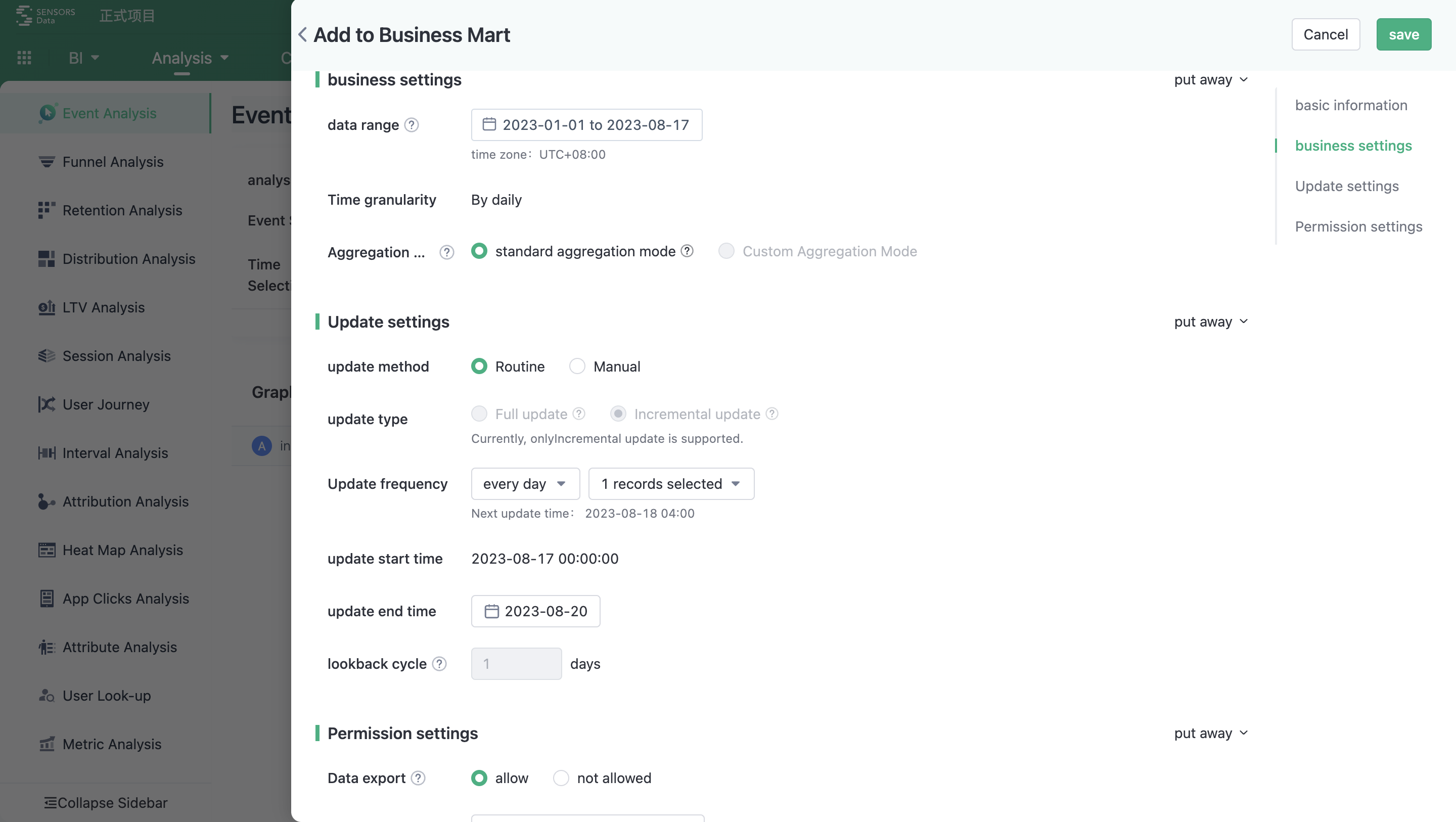
Real-time Business Model
Dataset supports storing only the query conditions of the analytic model without storing the result data, displaying data and rendering charts in real time through instant query, which can reflect the changes of the data in time, and is especially suitable for the scenarios that require quick response and decision-making. It can help users monitor data changes and trends in real time and take timely action to ensure data timeliness and accuracy. In addition, the real-time query model does not need to cache data in advance, which reduces the cost of system storage and processing and makes data processing more convenient.
When "Real-time" is selected for "Scheduling Mode", the caching mode in the update settings only displays back to remind the user of the current caching policy without additional configuration; the data permissions support the setting of "Synchronized Metadata Permission", which means that authorized users need to filter the underlying metadata permissions when viewing the business model in the lookback state and reports as shown in the following figure.
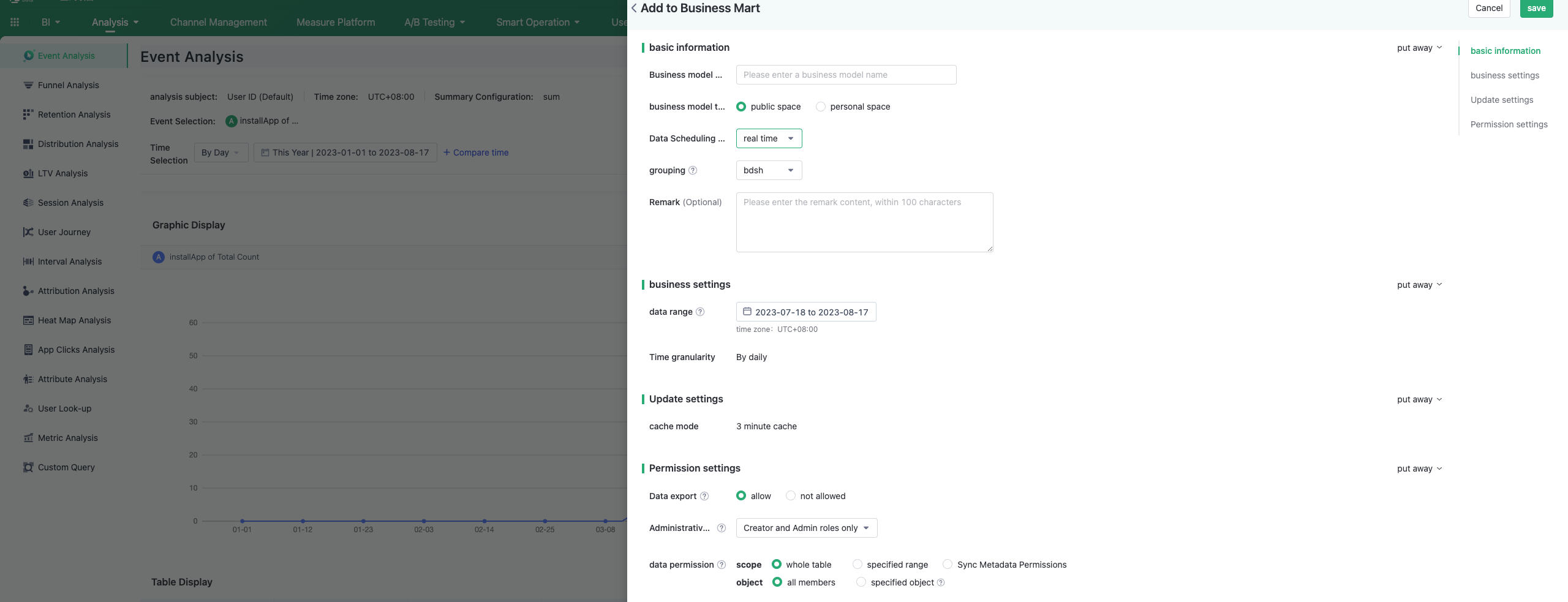
Display and Preview
After the business model is successfully saved, a new row of model information will be added to the list page of the business market, and users will be reminded of "added successfully" as shown in the figure below:
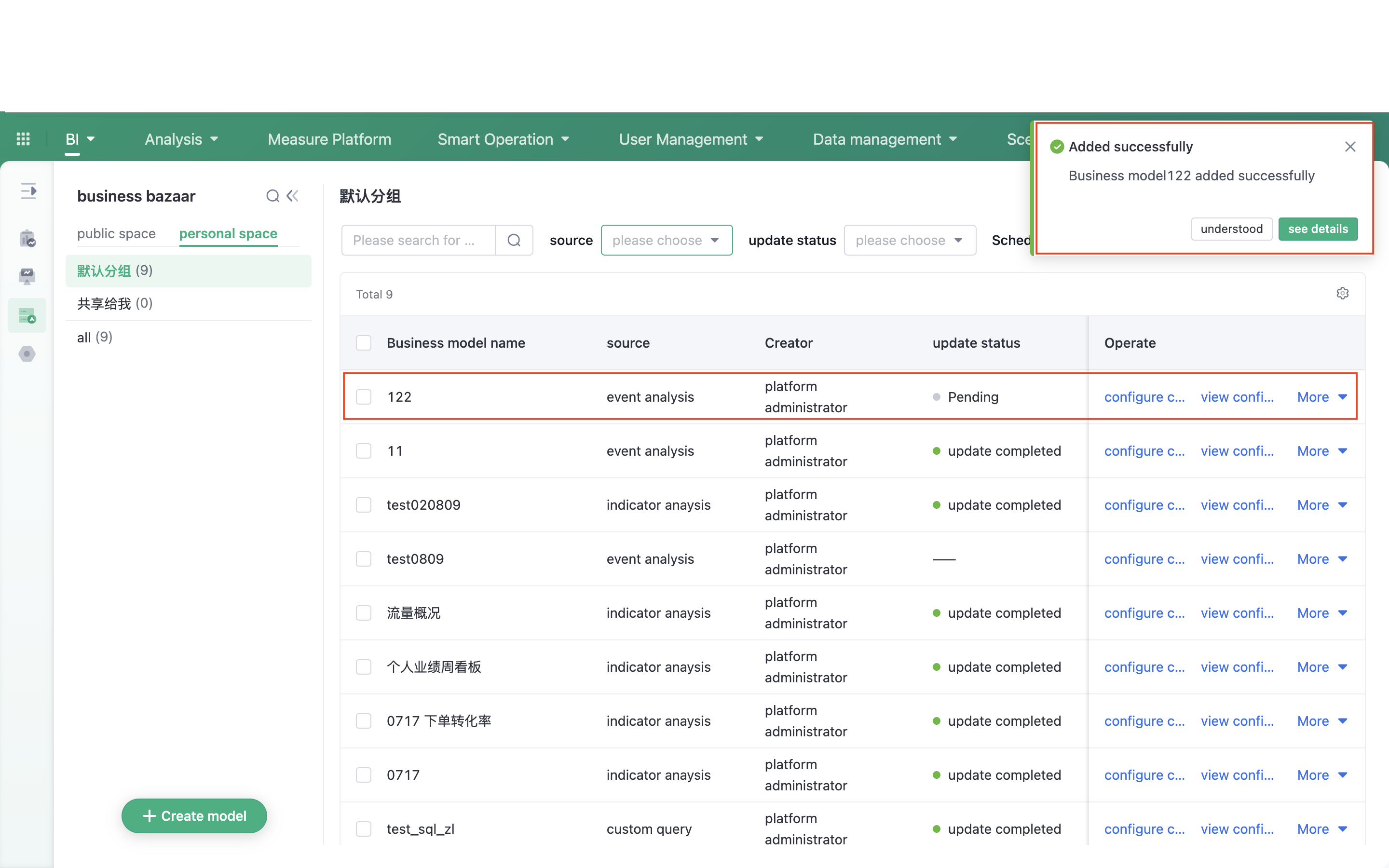
Clicking on the business model name will take you to the detail page of the model. The detail page of the business model is in read-only mode, where users can view detailed data of the business in the business market and visualization layer, and perform limited (within the selected condition range) shallow secondary analysis operations.
The detail page actually includes four parts, which achieve the ability to quickly render numbers in limited scenarios. For detailed information on each module, please refer to: View Business Models
- General Function Area
- Analysis Configuration Area
- Data filtering area
- Chart display area
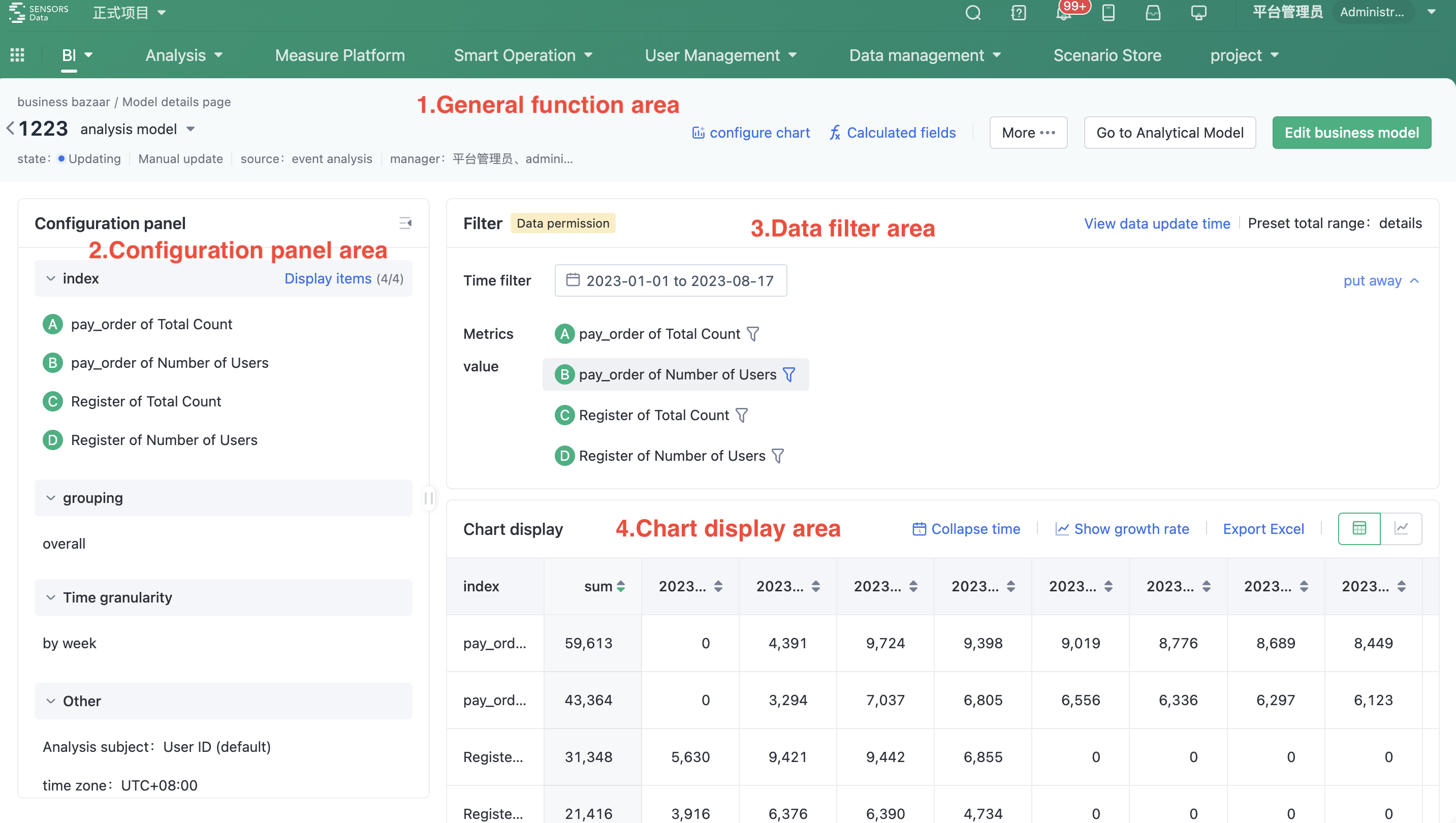
Note: The content of this document is a technical document that provides details on how to use the Sensors product and does not include sales terms; the specific content of enterprise procurement products and technical services shall be subject to the commercial procurement contract.
 Popular Searches
Popular Searches